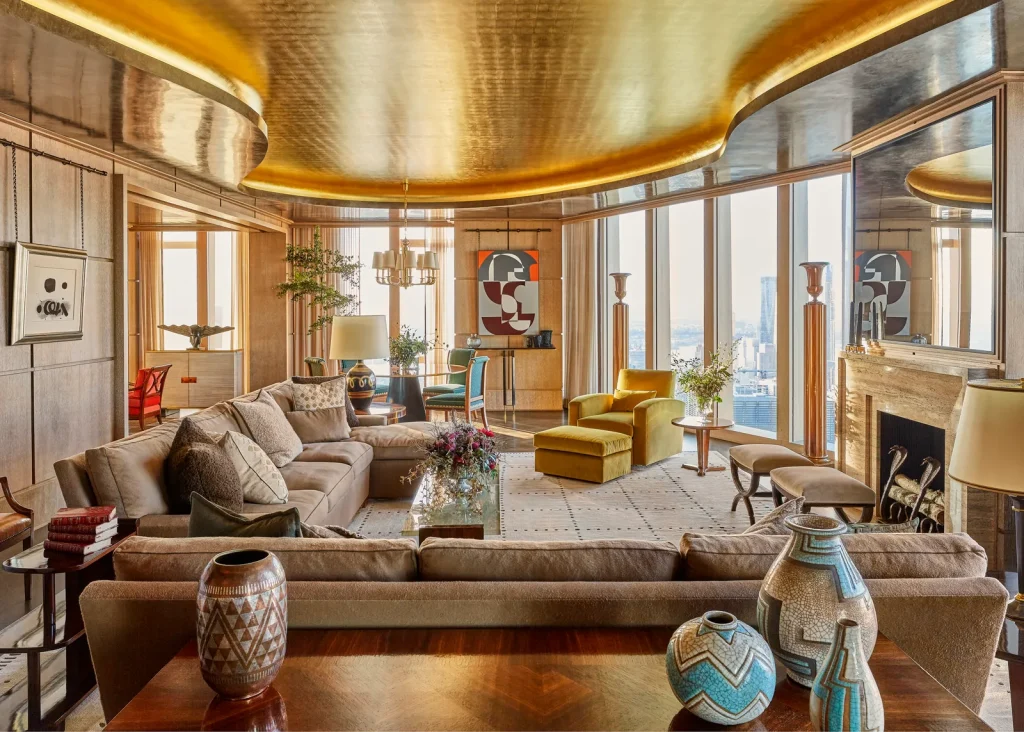Our homes are more than just buildings; they are the spaces where we create memories, find comfort, and express our unique personalities. Home improvement and interior design play a significant role in transforming these spaces into havens that reflect our tastes and lifestyles. Whether it’s a simple renovation, a full-scale remodeling project, or a fresh interior design overhaul, the art of transforming spaces can elevate our living experience. In this article, we will explore the world of home improvement and interior design, uncovering the key principles, trends, and tips to create captivating and functional spaces historyglow.
The Essence of Home Improvement: Upgrading Comfort and Functionality
Home improvement is the process of making modifications and enhancements to a property, aiming to increase comfort, functionality, and aesthetic appeal. It encompasses a wide range of projects, from small-scale upgrades like painting walls and replacing fixtures to larger endeavors such as kitchen remodels and room additions. The essence of home improvement lies in tailoring spaces to better suit the needs and desires of the homeowners techybio.
The Magic of Interior Design: Crafting Artistic and Cohesive Spaces
Interior design is the art and science of enhancing the interior of a space, achieving a harmonious balance between aesthetics, functionality, and practicality. Interior designers blend creativity, technical skills, and an understanding of human behavior to craft spaces that not only look beautiful but also feel comfortable and inviting. Through thoughtful selection of colors, furniture, textures, and lighting, interior design brings out the personality and style of the inhabitants overallnetworth.
Elements of Home Improvement: From Renovations to Smart Technology
Home improvement encompasses a myriad of elements that contribute to the overall transformation of a space. Some key elements include:
- Renovations: Upgrading outdated or worn-out components of a home, such as flooring, windows, and roofing, to improve both aesthetics and functionality.
- Space Optimization: Reconfiguring layouts and floor plans to maximize space utilization and create more open and inviting environments.
- Energy Efficiency: Implementing eco-friendly and energy-efficient features, such as smart thermostats, LED lighting, and energy-efficient windows, to reduce utility costs and environmental impact interbiography.
- Smart Technology Integration: Incorporating smart home technology, such as automated lighting systems and voice-controlled assistants, to enhance convenience and modernize the living experience.
- Outdoor Spaces: Transforming outdoor areas, such as patios, gardens, and decks, into inviting extensions of the indoor living spaces.
Principles of Interior Design: Balance, Harmony, and Proportion
Interior design follows fundamental principles that guide the creation of aesthetically pleasing and functional spaces. Some essential principles include:
- Balance: Striving for visual equilibrium by distributing elements, colors, and patterns evenly throughout a room mhtspace.
- Harmony: Ensuring that all design elements work together cohesively to create a unified and harmonious space.
- Proportion: Maintaining appropriate scale and proportions among furniture and decor items to achieve a balanced look.
- Focal Points: Creating focal points in a room to draw attention and add visual interest.
- Lighting: Utilizing various lighting sources to set the mood, highlight architectural features, and enhance the overall atmosphere.
Trends in Home Improvement and Interior Design
The world of home improvement and interior design is constantly evolving, with new trends emerging each year. Some current trends include:
- Biophilic Design: Emphasizing a connection with nature by incorporating natural materials, plants, and natural light into interior spaces.
- Sustainable Design: Focusing on eco-friendly and environmentally conscious design elements, such as reclaimed materials and energy-efficient appliances.
- Minimalism: Embracing simplicity and clean lines to create clutter-free and calming spaces.
- Multifunctional Spaces: Designing spaces that serve multiple purposes to maximize functionality in smaller homes.
- Vintage and Retro: Incorporating vintage or retro elements, such as mid-century furniture and classic patterns, for a touch of nostalgia and character.
DIY Home Improvement: Creativity and Personalization
Many homeowners find joy and satisfaction in DIY (Do-It-Yourself) home improvement projects. DIY enthusiasts take on tasks such as painting, refinishing furniture, and crafting decor items, adding their personal touch to their living spaces. DIY projects offer the opportunity for creativity and personalization, making a home uniquely reflective of its occupants.
Seeking Professional Help: Collaborating with Interior Designers and Contractors
While DIY projects can be rewarding, some home improvement and interior design endeavors may require professional expertise. Interior designers and contractors bring specialized knowledge, experience, and resources to the table, ensuring that the vision for the space is executed seamlessly and efficiently.
Transforming Outdoor Spaces: Extending Living Areas to the Outdoors
The transformation of spaces doesn’t end at the interior walls. Outdoor areas play a crucial role in expanding living spaces, providing opportunities for relaxation, recreation, and entertainment. Designing functional and aesthetically pleasing outdoor spaces, such as patios, decks, and gardens, creates a seamless connection between indoor and outdoor living.
Sustainable Design: Building for a Greener Future
Sustainable design principles are gaining prominence in both home improvement and interior design. Building and renovating with sustainability in mind not only reduces the environmental impact but also leads to long-term cost savings through energy efficiency and resource conservation.
Personalization: Making Spaces Your Own
The beauty of transforming spaces lies in the ability to personalize them according to individual preferences and lifestyles. Personal touches, such as family photos, sentimental decor items, and cherished art pieces, infuse a space with character and warmth.
Conclusion
Home improvement and interior design are transformative arts that hold the power to elevate living spaces into havens of comfort, beauty, and functionality. Whether through renovations, DIY projects, or collaboration with professionals, the process of transforming spaces allows homeowners to express their personalities, cater to their needs, and create spaces that reflect their unique stories. As trends in sustainability, technology, and personalization shape the future of home improvement and interior design, the possibilities for creating captivating and functional spaces are endless. By embracing these arts, we can craft living spaces that inspire, rejuvenate, and bring joy for years to come.

